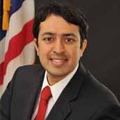Older adults are a vulnerable population when there is a natural disaster and often will need help long after the crisis has passed. We like this map for locating senior services in areas where older adults and caregivers have been affected by Superstorm Sandy. The map flags services in affected areas, and notes which locations need volunteers and donations. Our kudos to AGS member Wen Dombrowski, MD, for working on this.

